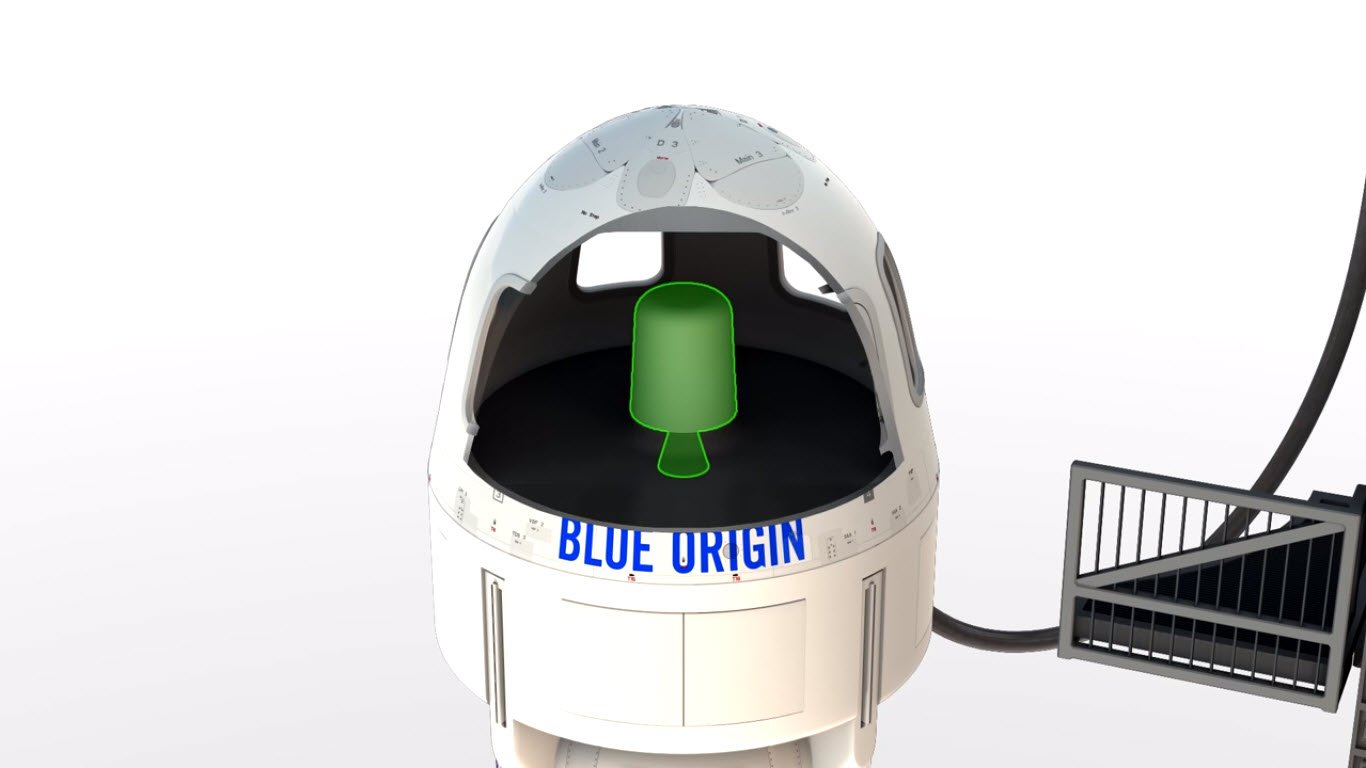
Blue Origin, the private spaceflight company led by billionaire Amazon.com founder Jeff Bezos, plans to launch a critical safety test of its New Shepard suborbital vehicle today (Oct. 5).
If all goes according to plan, the New Shepard capsule will zoom away from its rocket shortly after liftoff from Blue Origin's west Texas test site, showing how it would get passengers to safety in the event of a real-life launch emergency. Blue Origin will webcast the uncrewed test live beginning at 10:50 a.m. EDT (1450 GMT) today at www.blueorigin.com; you can also watch it live here at Space.com, courtesy of Blue Origin.
Blue Origin is developing New Shepard — which consists of a capsule and a rocket, both of which are reusable — to take people and/or scientific experiments on brief trips to suborbital space. The company has already launched four successful suborbital test flights since November 2015; each time, the rocket returned to Earth for a soft landing, and the capsule did the same, with the aid of parachutes. [In Photos: Blue Origin's Latest Rocket Launch & Landing]
But today's test will be different.
"About 45 seconds after liftoff at about 16,000 feet [5,000 meters], we'll intentionally command escape," Bezos wrote in a blog post last month. "Redundant separation systems will sever the crew capsule from the booster at the same time we ignite the escape motor."
That escape motor, which is mounted beneath the New Shepard capsule, will burn for 2 seconds, blasting the vehicle hundreds of feet away from the rocket. The capsule will coast for a while and then deploy three "drogue" parachutes near the top of its flight path, Bezos added. The main parachutes will open shortly thereafter, allowing New Shepard to touch down softly.
The rocket, which has already flown and landed four times, probably won't be so lucky: The 70,000 lbs. [32,000 kilograms] of force exerted by the capsule's escape motor will knock it off-kilter, making a successful landing unlikely, Bezos wrote.
Get the Space.com Newsletter
Breaking space news, the latest updates on rocket launches, skywatching events and more!
"If the booster does manage to survive this flight — its fifth — we will in fact reward it for its service with a retirement party and put it in a museum," Bezos wrote. "In the more likely event that we end up sacrificing the booster in service of this test, it will still have most of its propellant on board at the time escape is triggered, and its impact with the desert floor will be most impressive."
Follow Mike Wall on Twitter @michaeldwall and Google+. Follow us @Spacedotcom, Facebook or Google+. Originally published on Space.com.
Join our Space Forums to keep talking space on the latest missions, night sky and more! And if you have a news tip, correction or comment, let us know at: community@space.com.

Michael Wall is a Senior Space Writer with Space.com and joined the team in 2010. He primarily covers exoplanets, spaceflight and military space, but has been known to dabble in the space art beat. His book about the search for alien life, "Out There," was published on Nov. 13, 2018. Before becoming a science writer, Michael worked as a herpetologist and wildlife biologist. He has a Ph.D. in evolutionary biology from the University of Sydney, Australia, a bachelor's degree from the University of Arizona, and a graduate certificate in science writing from the University of California, Santa Cruz. To find out what his latest project is, you can follow Michael on Twitter.










